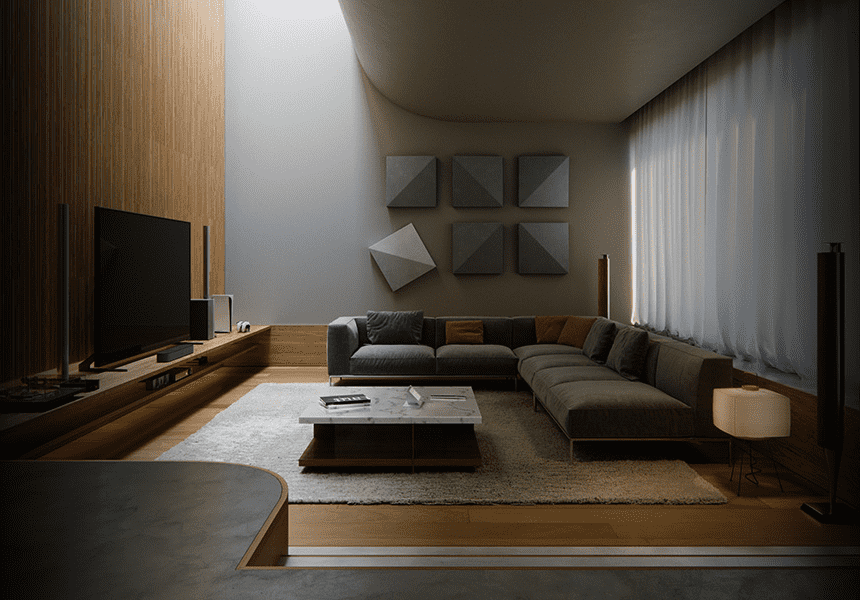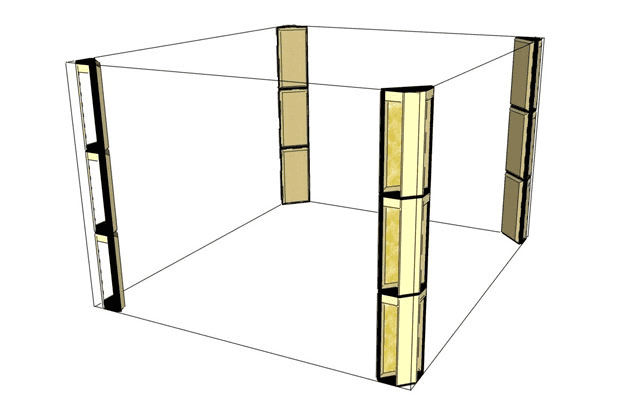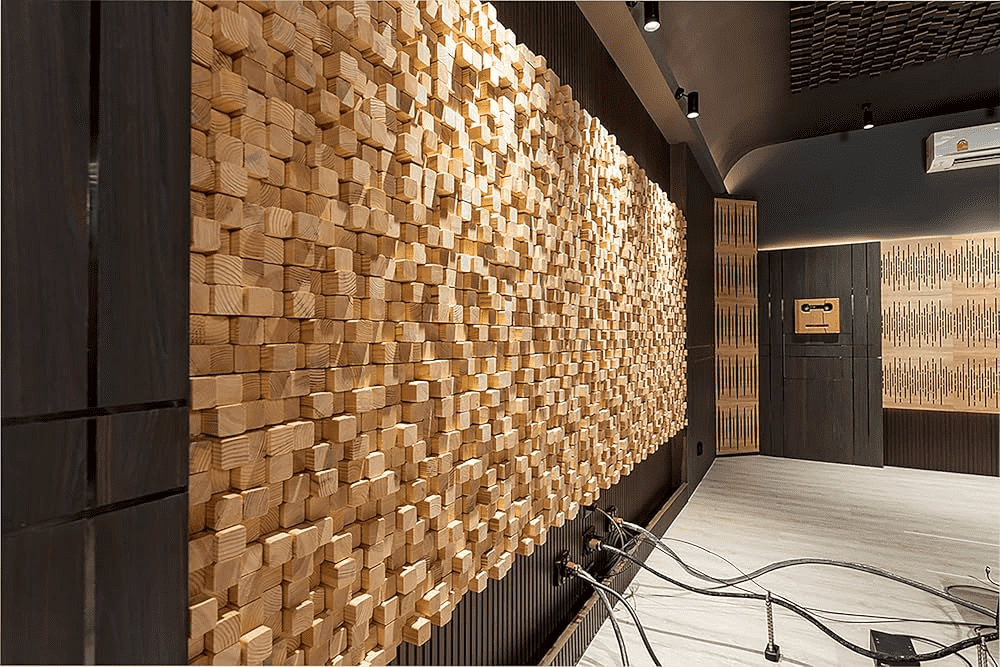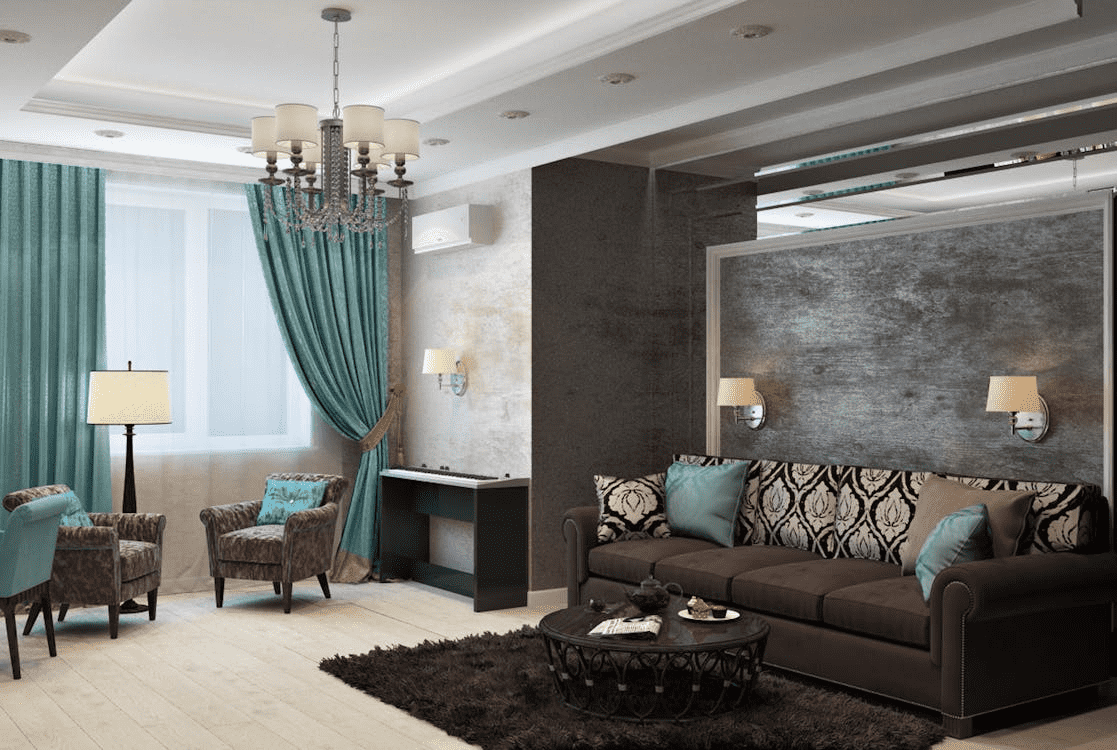When it comes to building the perfect Hi-Fi or home theatre system, most enthusiasts focus on the equipment: speakers, amplifiers, subwoofers, and source components. While these are certainly crucial, one often overlooked but equally important factor is room acoustics. No matter how high-end your gear is, poor room acoustics can significantly degrade the overall sound quality. Here, we explore why room acoustics matter and how they can transform your listening experience.
Why Room Acoustics Matter?
Every room has its own acoustical properties that affect how sound waves behave. When sound leaves your speakers, it interacts with the environment—bouncing off walls, ceilings, floors, and furniture. These reflections, echoes, and reverberations can distort the sound, making it muddy or overly bright, and can even reduce the accuracy of your speakers. Properly addressing room acoustics is about controlling how sound waves behave in the room, helping to achieve clear, detailed, and balanced audio.
Without attention to room acoustics, even the best Hi-Fi system or surround sound setup will not perform optimally. Proper acoustic treatment helps ensure you hear your music and movies as the artist intended—with full clarity, punch, and natural tonality.
Common Room Acoustic Problems-
- Reflections: Sound bounces off hard surfaces (like walls, floors, and ceilings), creating reflections that can interfere with the direct sound from the speakers. This can lead to blurred imaging and loss of detail.
- Reverberation: In rooms with hard surfaces and little absorption, sound waves keep bouncing around, creating an overly “live” or echoey environment. This makes dialogue in movies harder to understand and can reduce music clarity.
- Standing Waves: These occur when certain frequencies build up in specific areas of the room, creating uneven bass response. Some spots may have too much bass, while others may have too little. This issue is especially problematic in home theatre setups.
- Flutter Echoes: When sound bounces rapidly between two parallel walls, it creates flutter echoes that can lead to harsh, high-frequency reflections, making the sound feel "tinny" or overly sharp.
Acoustic Treatments for Better Sound
Fortunately, there are several practical solutions to these common acoustic problems, ranging from simple fixes to more advanced treatments.
- Absorption Panels: These panels are designed to absorb mid and high frequencies, preventing sound from bouncing off walls and ceilings. By installing absorption panels, you can reduce reflections and improve sound clarity. They’re particularly effective behind and beside your speakers.

- Bass Traps: Bass traps help address low-frequency issues, such as standing waves and uneven bass response. Typically placed in corners, bass traps absorb excess bass, giving you tighter, more controlled low frequencies.

- Diffusers: Unlike absorption panels, diffusers scatter sound waves in multiple directions, rather than absorbing them. This helps maintain the liveliness of a room without the harshness of reflections.

- Carpets and Curtains: Hard floors and glass windows can reflect sound, causing unwanted reverberation. Adding rugs, thick curtains, or even soft furniture can help absorb excess sound and reduce these reflections.

The Impact of Room Size and Shape
Room dimensions, including size, shape, and layout, play a major role in acoustics. Square or rectangular rooms often suffer from more pronounced standing waves, as sound bounces between parallel walls. Irregularly shaped rooms, while more complex to treat, often provide more natural dispersion of sound.
Large rooms may suffer from longer reverberation times, which can make the audio sound distant or unclear. Smaller rooms, on the other hand, may cause excessive reflections that make the sound feel “boomy” or overly bright.
Optimising Speaker Placement
Proper speaker placement is critical to achieving the best sound in any room, regardless of the equipment used. You’ll want to place your speakers symmetrically in relation to your listening position, with equal distance from each wall. Additionally, keeping your speakers at least half a metre away from walls helps reduce unwanted bass reflections and can improve the overall clarity of your sound.
For Dolby Atmos or surround sound setups, proper placement of overhead speakers or surround speakers enhances the immersive effect by creating precise, three-dimensional audio positioning.
The Difference Acoustic Treatment Makes
Acoustic treatments may not sound as exciting as upgrading your speakers or amplifier, but their impact can be profound. A well-treated room will not only improve clarity, imaging, and bass response, but it also lets you fully appreciate the potential of your equipment. In essence, acoustic treatment allows you to hear your Hi-Fi or home theatre system at its very best.
DIY Acoustic Treatment Tips
If you're not ready for full-scale acoustic treatments, there are a few DIY solutions you can try:
- Move furniture around to break up parallel surfaces and minimize reflections.
- Hang heavy curtains to cover reflective surfaces like windows.
- Lay down a thick rug to absorb some of the sound reflecting off the floor.
- Add bookshelves filled with books to naturally diffuse sound.
These small adjustments can help tame your room’s acoustics without the need for extensive renovation or expensive treatments.
Conclusion
Room acoustics are just as important as your speakers, amplifier, or source components. Without addressing the acoustic characteristics of your listening environment, even the best equipment will underperform. Investing in acoustic treatment and proper speaker placement can drastically improve your Hi-Fi or home theatre setup, allowing you to experience music and movies the way they were meant to be heard.
At BMC Audio Visual, we specialise in custom Hi-Fi and home theatre solutions, including optimising room acoustics without compromising room aesthetics. Contact us today to learn more about how we can help you get the most out of your setup.